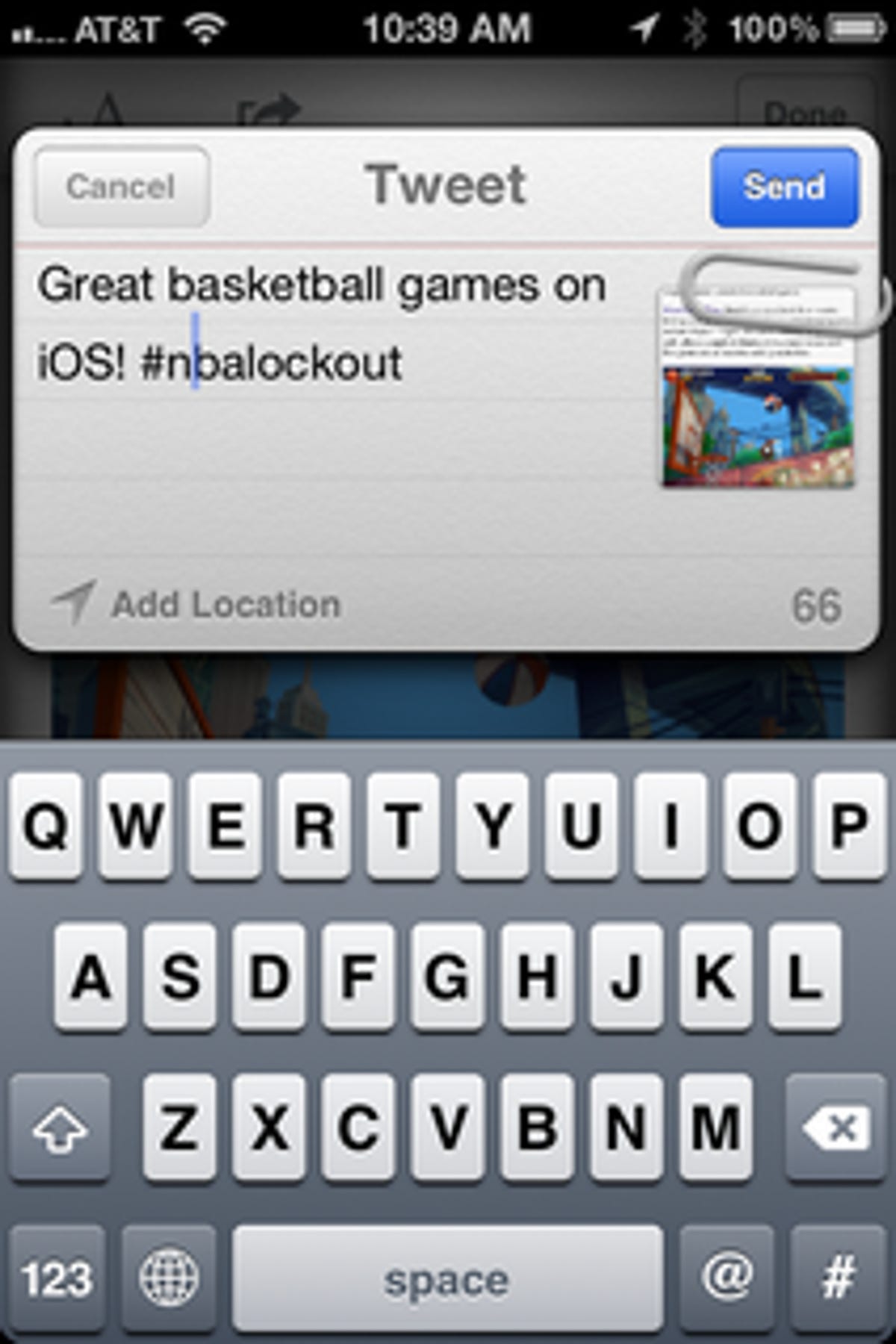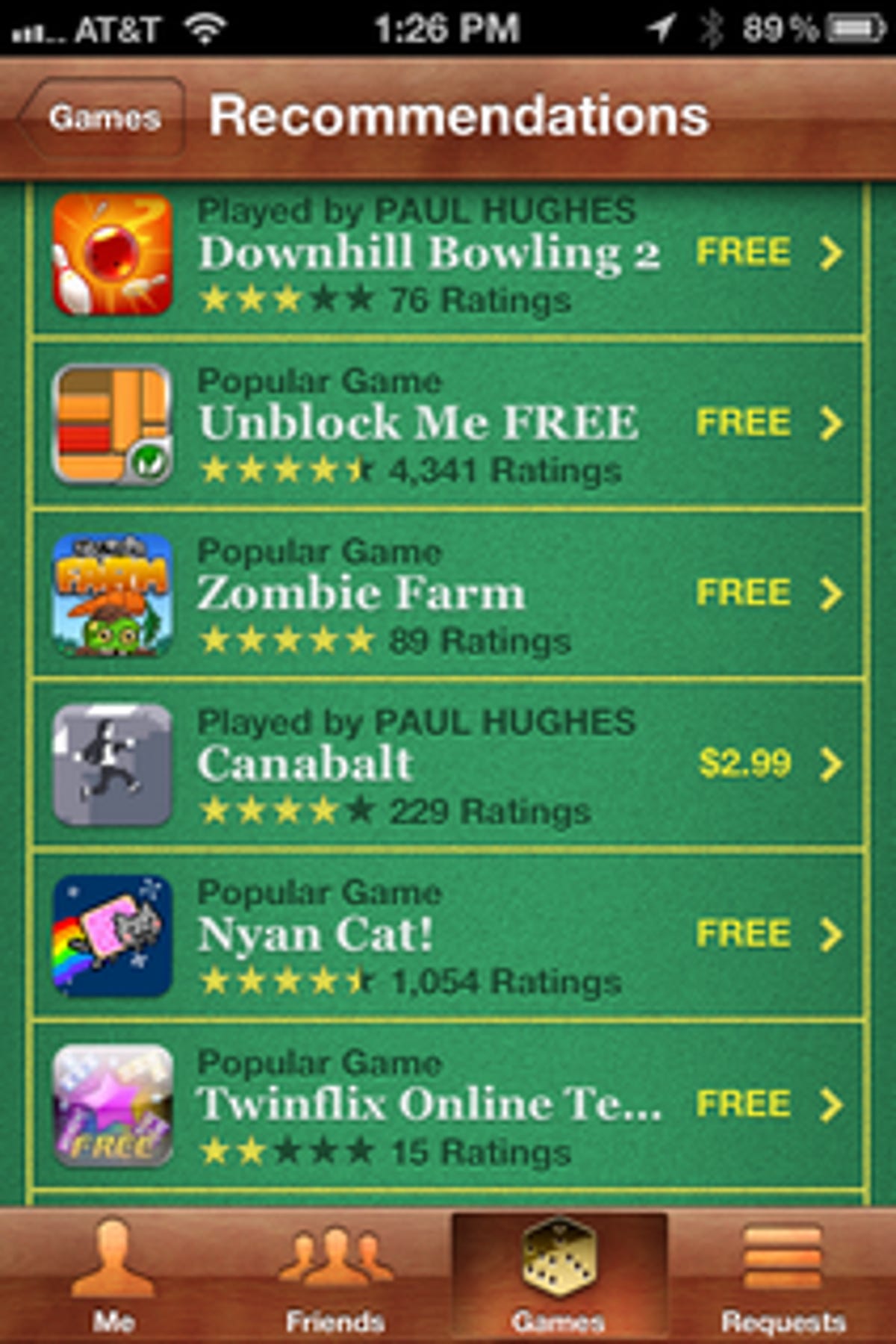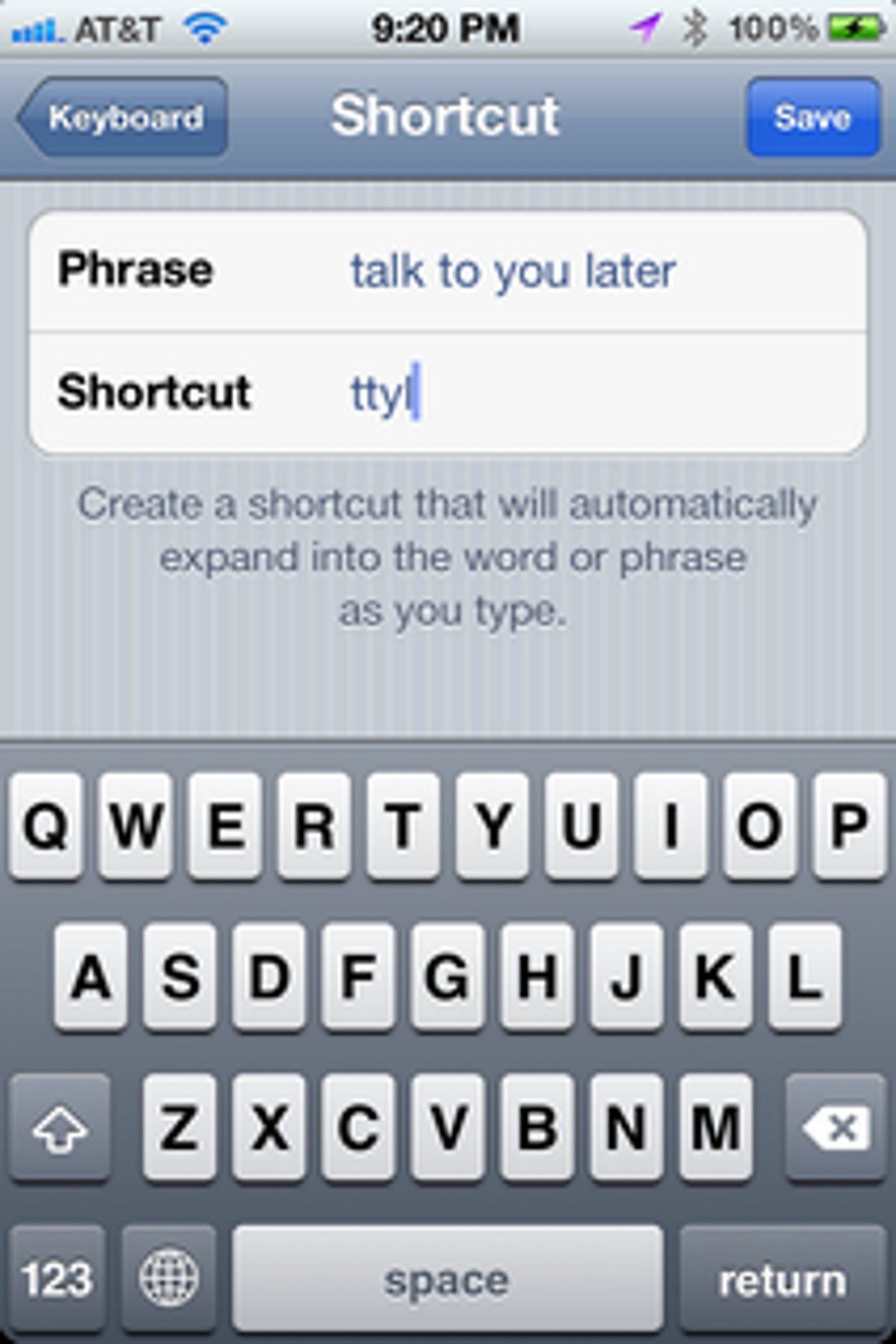

Now playing:
Watch this:
Apple’s iOS 5
2:45
At long last, iOS 5 is finally here, two days before the launch of the iPhone 4S.
(Related: We’ve heard that a number of users have had problems installing the update. Get the latest news on install issues in this post from CNET’s Josh Lowensohn.)
Though iOS 5 is not as drastic of an upgrade as we saw with iOS 4 in June 2010, it does offer some much-needed and exciting enhancements for iOS users. A few are quiet and long overdue and others will seriously change how you use your Apple handset.
On that note, perhaps the biggest of all is the addition of over-the-air updates, which obviate the need to tether your iPhone to a computer for syncing. But there’s a lot more under the hood with this upgrade, and we think users should be excited to plug in their iDevice one last time. iMessage also adds a new way to keep in touch and a way to circumvent your carrier’s monthly allotment of messages.
A few improvements simply make the user experience easier, like Twitter integration in the major Apple apps, basic image-editing tools for the camera, and a Notification system paired with reminders that keep you informed with a glance at your Home screen. Smaller upgrades abound, of course, some of which we’ve listed here. We haven’t found all the “Easter eggs,” though, so as you find other changes, let us know in the comments.
A tour of iOS 5 on the iPhone (screenshots)






We’ve documented many of the major changes here, but we tried to limit our coverage to the big tweaks that will affect users most. Apple says there are more than 200 new tweaks for the iPhone, iPad, and iPod Touch, and we’ll be covering many more of the minor changes with features and How To posts in the coming weeks.
Available for free, iOS 5 will be compatible with the iPhone 4S, the iPhone 4, the iPhone 3GS, both versions of the iPad, and the third- and fourth-generation models of the iPod Touch. Keep in mind that the quality of iOS 5 may vary by device. When Apple released iOS 4 last year, many iPhone 3G users complained of degraded device performance after they downloaded the update (one group even filed a lawsuit). Apple mostly fixed the issues with the release of iOS 4.2, but we’ll be taking a close look as to how iOS 5 fares on the 3GS.

Screenshot by Jason Parker/CNET
Notifications
Instead of pop-up menus that interrupt your work, a new Notification Center will combine messages, missed calls, app updates, a stock ticker, and the current weather in a single place. You can access it by swiping your finger downward from the top of the screen, and notifications will appear on the lock screen as well. You then can jump directly to the related feature for each notification and delete items by tapping the small X next to each line.
Though not exactly original–the pull-down menu has long been a hallmark feature of Android–the ability to see all notifications in one place in iOS 5 is certainly welcome. Since the first iPhone’s debut more than four years ago, the iOS notification system has remained largely unchanged so we were long overdue for an upgrade. While simple, in the pre-iOS 5 world, the current application running is unusable until you dismiss the message. Even worse, several messages in a row quickly become annoying. We think iOS users will appreciate this small, but time-saving change. Check back later this week to see how these notification features compare with Android.
Newsstand
This app will bring together magazine subscriptions in a central place. The concept is similar to iBooks, even down to an icon that looks like the periodicals shelf at your local library. As you subscribe to a publication through a new channel in the App Store, new issues are delivered in the background, eliminating the need to manually grab them when they publish.
Newstand’s success on the iPhone depends largely on how much reading you do on the smaller device, and how much digital content you purchased through Apple, but it’s a great way to have content you like delivered to you. iPad users will probably benefit most with the added screen real estate and reading magazines on your iPad will now be easier than ever. Worth noting is that Apple’s done something interesting with this app, letting it expand into a user’s home screen, just like a folder of applications. The company doesn’t let third-party apps do this. All of the Newsstand features will become available at launch. We will add to this portion of the review when we learn more.


Screenshot by Jason Parker/CNET
Twitter
Thankfully, users now will be able to post photos to the social networking service without leaving the image gallery or camera application. It’s a nice change, given that it will end the need to take a photo, switch to the iPhone Twitter app, and then post the photo. You’ll be able to add a location, sync Twitter with your contacts list, and tweet directly from YouTube, Safari, and Maps.
When you send your first tweet from any of the designated apps, you can enter your Twitter info or create a new account. You’ll also have the option to download the free Twitter client from within the sign-in screen–probably part of the deal Apple set up with Twitter to get integration into iOS 5. While there are third-party apps that might be a better choice as your Twitter client (iOS 5 Twitter integration does not include browsing Twitter), we think users will appreciate the ability to quickly send a tweet.


Screenshot by Jason Parker/CNET
Safari
The mobile version of Apple’s Web browser now has the Reader option that was announced at the 2010 WWDC. Rather than having to deal with complicated layouts of various Web sites, the reader streamlines multipage articles in a RSS-like view while stripping out ads, but leaving photos. You also can e-mail the entire text of a Safari page to a contact (under iOS 4, you could send only a link).
The Reader option is fantastic for reading strangely formatted Web pages, giving you a clear and iOS optimized layout for reading articles. We think people will be especially happy to finally get away from reading Web sites meant for a desktop computer, when there is no mobile option available. Our only problem with the Reader is that it may strip out too much–we often want to see comments on an article, but the Reader deems them unnecessary.
In other Safari news, tabbed browsing is now available on the iPad and you can add a Web page to a Reading List list for future perusal on any iOS device. The latter feature keeps a story on your reading list until you have time to read it, and it can be synced between multiple Safari devices. Be sure to check out our post exploring iOS 5 on the iPad from Donald Bell.


Screenshot by Jason Parker/CNET
Reminders
This handy addition lets you store multiple to-do lists with dates for each event; you can categorize reminders by GPS location. So, for example, if you have a reminder of “Call home when I leave work,” the app will use GPS to note when you’re on the move and send the reminder via push notification. Reminders can be shared between devices and sync with iCal on the Mac with CalDAV, and on Windows with MS Exchange. The app has its own sleek-looking scrollable calendar as well, so you can browse or add new tasks and reminders for future dates.
We tested the reminder by location by having it tell us “Don’t forget your iPad” once we left the building here at CNET. Sure enough, the iPhone reminded us once we got about a half block away from the building. You also can have it remind you to do something when you arrive at a location, like “Call Mom when I get home.” These will both be extremely useful for those of us who don’t remember all the details.
Browsing through your reminders is easy with a starting page where you can quickly track and search for reminders using a search field. You also have the option to create tasks for more-open-ended reminders that don’t need to be done by a specific time. We think Apple did an admirable job with this app, but we think many of the plethora of to-do apps at the iTunes App Store offer more options. For simple reminders and tasks, however, the Reminders app will probably be enough for most users.


Screenshot by Jason Parker/CNET
Camera
iOS 5 adds several requested features to the camera app, making it much more like a point-and-shoot camera. You get a shortcut on the lock screen that will launch the camera immediately, even bypassing the lock code. A simple double-tap of the Home button brings up both the basic music controls (as before) and the camera icon in the lower right. You then can use the volume control to snap a photo. The picture is saved to your camera roll, but for security (having not used your access code) you’ll only be able to delete the shot (keeping unwanted users from browsing your iPhone photos). Inside the camera you’ll get grid lines, pinch to zoom (in addition to a slider bar at the bottom of the screen), autofocus, and the ability to change the exposure.
After taking photos, you can edit your shots with crop, rotate, red-eye reduction, and a single-tap color correction option. The cropping features let you crop your images with a resizable box, or you can constrain the aspect ratio to keep a standard size. Rotate options let you spin an image in 90-degree increments so you won’t have to worry about sideways photos. Red-eye reduction is a simple process that has you select the red-eye tool, then tap the red eyes of your subject for instantaneous and impressive results. The single-tap color correction tool balances your colors and, in our tests, did indeed make the image look better. Though we welcome these additions, Apple is way too late to the photo-editing party, as this functionality has existed on basic phones for years. Also, while we like the basic editing features, we doubt it will mean the demise of third-party apps like Photoshop Express.


Screenshot by Jason Parker/CNET
Mail
The iOS Mail app now has rich text formatting, better indent control, flagging of messages, and the ability to drag addresses between To, CC, and BCC lines. Also, you now can search within the body of a message instead of just in the From, To, and subject lines.
Mail for iOS has needed many of these features for a long time, so it’s good that we finally have them. Flagging e-mails as important will certainly help the business crowd. The selection tool (when you double-tap a word and drag selection anchors) is still a little awkward to use–especially for large blocks of text, and it’s important to note that you’ll need to select text to apply any rich text formatting (bold, italics, or underline options once selected). Still these are needed steps forward for the Mail app, and users will appreciate the changes.
One thing on our wish list for a future iOS release is for Mail to get Safari’s Reader feature. With iOS 5 we still stumbled upon the occasional e-mail with its own special formatting that the app didn’t adjust to make eyeball-friendly on the smaller screen. Considering how much e-mail reading people do on their iOS devices, this would be a welcome addition.
PC Free and iCloud
Arguably the most notable change, PC Free will bring over-the-air software updates and device activations. So as on Android, Windows Phone 7, and BlackBerry OS 5 devices, you’ll no longer have to plug your device into a computer or even own a computer at all. The updates will serve only the changes, so they’ll be shorter, and you’ll be able to sync, back up, and restore your device using the new iCloud features. You’ll also find new features within apps, like wirelessly editing photos, managing e-mail folders, and creating and deleting calenders.
To sync your iOS device to iTunes on your computer, you need only be on the same Wi-Fi network and your device needs to be charging (plugged into a charger). You can then go to Settings > General on your iPhone to select iTunes Wi-Fi Sync. From there you can select Sync Now on your iPhone and your photos, music, and calendars will be backed up in iTunes.
While not pretty or particularly novel (especially with so many other smartphones offering the same features), over-the-air updates might be the most important of all for iOS in this update. We’ve heard many stories of users complaining about sync times, and not having your phone tethered to your computer for long periods will be appreciated by all. We’ll add more details about iCloud as we use explore it further.


Screenshot by Jason Parker/CNET
Game Center
Additions for gamers in iOS 5 include the addition of profile photos, the ability to compare achievement points, friends of friends lists, recommended friends and games, support for turn-based games, and a way to buy games directly from Game Center.
We like the added personal touch of adding a photograph to our profile in Game Center, but we think people should have more fun options for page customization (it is “Game” Center, after all). Game recommendations (based on your current library) seem pretty solid, but we did find a few games in the list we had previously deleted. The ability to buy games from within Game Center makes it a bit more of a destination, but it still seems like the service will still be a behind-the-scenes social connector as it was in iOS 4.
iMessage
Apple takes a shot at BlackBerry with this instant messaging app that will work across all iOS 5 devices. As with BlackBerry Messenger (BBM), you’ll be able to exchange unlimited text messages, photos, and videos with your friends, family, and colleagues. Also, your messages won’t cost you anything and they won’t count against the monthly allotment of messages from your wireless carrier.


Screenshot by Jason Parker/CNET
You’ll also get group messaging, an indicator to see if someone is typing to you, delivery and read receipts, secure encryption, and conversation syncing that is pushed to multiple devices. iMessage will work on 3G and Wi-Fi networks.
The updates to the iPhone messaging system are welcome changes, with some of the new features mimicking what third-party paid chat apps in the iTunes App Store already do. We’re a little disappointed that the location and contact sharing features don’t come straight from iMessage (you need to share them from the Map app or your contacts) as found in third-party apps. Still, the ability to send that data to a friend is an improvement. For example, to send a contact, you’ll need to go to your home screen, open your contacts, select a person, choose the Share Contact button, then choose iMessage. It would have been better if we could bring up the contact list straight from iMessage. We will be comparing these features more in depth to BlackBerry Messenger (BBM) later this week.


Screenshot by Jason Parker/CNET
Find My Friends
Announced at the unveiling of the iPhone 4S, Find My Friends is an iOS 5-exclusive app that lets you view your friends’ and family’s locations in real time on a map when they agree to share location info with you. For added security, you can set a time limit for how long you share your location, a major concern of people who don’t want to continually broadcast their location.
You start by signing in with your iTunes account ID, then you can send an invite to friends using their iTunes account ID. Once received, they will need to send a request to you as well. After everyone has given permission, you’ll be able to get a pretty close approximation of where your friends are on a map. In our testing in San Francisco, our location would be very accurate on one street, then in another location it would be a block away from where we were standing. The app seems mostly accurate, but your mileage may vary depending on where you use it.
Find my Friends offers a friend list, so once you have both given permission, you can send a request at a later date to have that person allow his or her location to be shared. The app also has options to give you directions to your friends (via Maps) or speak to them on FaceTime (iPhone 4 or newer) if you can’t get an exact location.
While these types of location features might be useful in specific situations, Android has similar services that have received mixed reviews–specifically by those who were worried about security concerns. Still, with the ability to specify a time limit, we think Find My Friends will be useful to many people.
The Find My Friends app went live at the iTunes App Store just before iOS 5’s release.


Screenshot by Jason Parker/CNET
Cards
A new greeting card delivery app also became available in the iTunes App Store alongside the iOS 5 release. Cards lets you design a card on your iOS device and have Apple print it up on high-quality paper (yes, it will be real paper) and send it to your chosen recipient. The service comes with a price, though; you’ll pay $2.99 to send a card within the U.S. and $4.99 to send a card anywhere in the world.
Start making a greeting card by touching the Create button. Then, choose from several card exteriors that offer seasonal- or event-appropriate designs. Across the bottom of the interface are icons to narrow your search for travel-related cards, birthday cards, and a few others. Once your exterior is selected, you can snap a new photo with your iPhone camera or add a photo from your iPhone library to personalize the card. Next, you can edit the text inside the card to personalize it for your friend or family member. Finally, you can add the recipient’s address to the front of the envelope and your return address. Don’t worry too much about making mistakes; you have buttons across the top of screen for each stage of the process: Outside, Inside, and Envelope. When you’re finished, you can review your selections then make the purchase using your Apple account.
There are several services (like Postcardly or apps like Real Postcards) that let you send post cards, but Cards in iOS 5 sends fold-open greeting cards on real paper in an envelope via snail mail (all done through Apple), and gives you a push notification when it’s been delivered. Though it doesn’t have quite the number of customization options that other services have, it’s a convenient way to send someone a special treat in the mail.
Siri
A feature exclusive to the iPhone 4S, Siri builds on the iOS Voice Control feature while adding a lot more. Working as an AI voice control system that comprehends what you’re saying, Siri lets you give your iPhone commands or ask it questions using natural language. It’s more than just a “Call home” voice command system; you can simply say, “Remind me to call my wife at 4:30 about dinner” and Siri will respond by setting up a time in your calendar and repeating the specifics of the event so you can confirm it for a reminder. You can also tell Siri to read your latest text messages, and you can ask it the fastest way home from your current location and other complex questions. Siri comprehends (most) questions and tries to give you the best answer.


Screenshot by Jason Parker/CNET
Siri offers features that anyone can appreciate who’s been driving and heard the iPhone’s telltale text notification sound, for example. It also ushers in a new way to interface with iPhones, if Apple can pull it off. Siri is still in beta and will be available to iPhone 4S users at launch on October 14. Expect a deeper dive into Siri once we get our hands on the iPhone 4S.
Personal dictionary
A new keyboard shortcut feature lets you create your own personal dictionary. While nothing new, you’ll now be able to set up keyboard shortcuts for phrases. Head to Settings > General > Keyboard, then scroll down to Add New Shortcut. Here you can add a phrase like “Talk to you later” then make the shortcut “ttyl.” Now, every time you type those letters in an e-mail or text, it will be spelled out automatically.
Alternate Routes
Another new feature that travelers will appreciate is Alternate Routes. When in the Map app, you can get directions as usual, but instead of giving you just one route to your destination, the Map app will now give you two alternate routes (in case of problems like traffic or if you know of nearby construction sites). Simply touch a route to find out how long it will take to get to your destination, then choose the best for your situation. In our tests here in San Francisco, the routes were solid options, and we think this will come in handy wherever you are. The noticeable downside here is that once you’ve picked your route, the other ones remain on screen, which can be distracting.


Screenshot by Jason Parker/CNET
Plenty more
Other updates include new multitasking gestures for the iPad, hourly weather forecasts, a split keyboard for the iPad, a new iPad music app, an iTunes ringtone store, AirPlay mirroring for the iPad 2 and iPhone 4S, Emoji emoticons, and custom vibration patterns. Check back for more in-depth features about many of these in the coming weeks.
Conclusions
In the end, iOS 5 seems more about fixing a lot of niggling annoyances than offering a completely new phone. And though we’d always love more, that’s fine with us. Over-the-air syncing is probably the biggest relief for most iOS device owners, but improvements to iMessage, integrated Twitter features, useful but fairly simple camera upgrades, and the addition of task management and reminders are marked improvements over past versions.
Added extras like a place for magazine and newspaper subscriptions in Newsstand, greeting cards in Cards, and Find My Friends features might be useful in some situations, but we wonder just how important they will be to users over time. Apple has smartly decoupled most of these from the iOS itself, giving those who want a lean and mean device that option from the get go.
Overall, iOS 5 is a worthy upgrade with some huge new features, several useful tweaks, and smaller additions that may not have as big of an impact on how you use your iOS device. As a free upgrade that improves your overall experience, iOS 5 is a no-brainer for any iDevice owner. Even though we like what we see, we hope to see tweaks in future upgrades that refine each of the new features a bit more.



